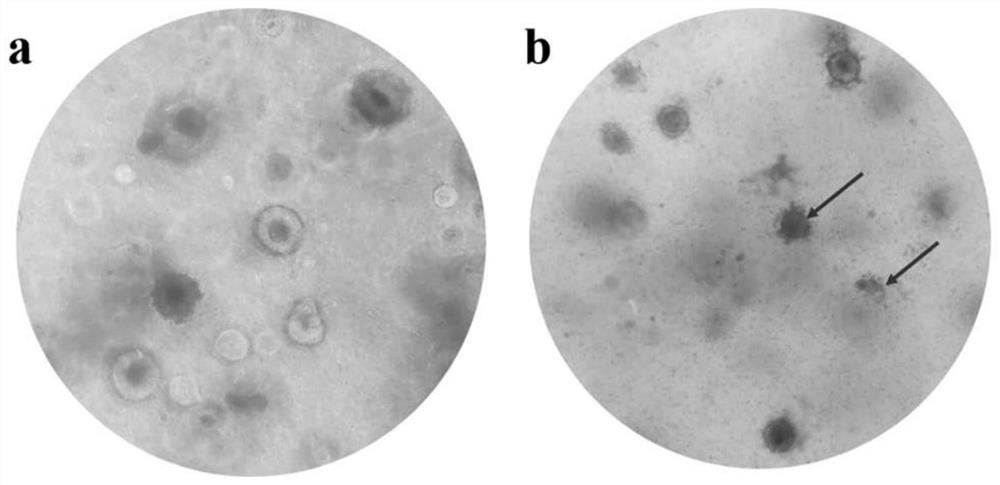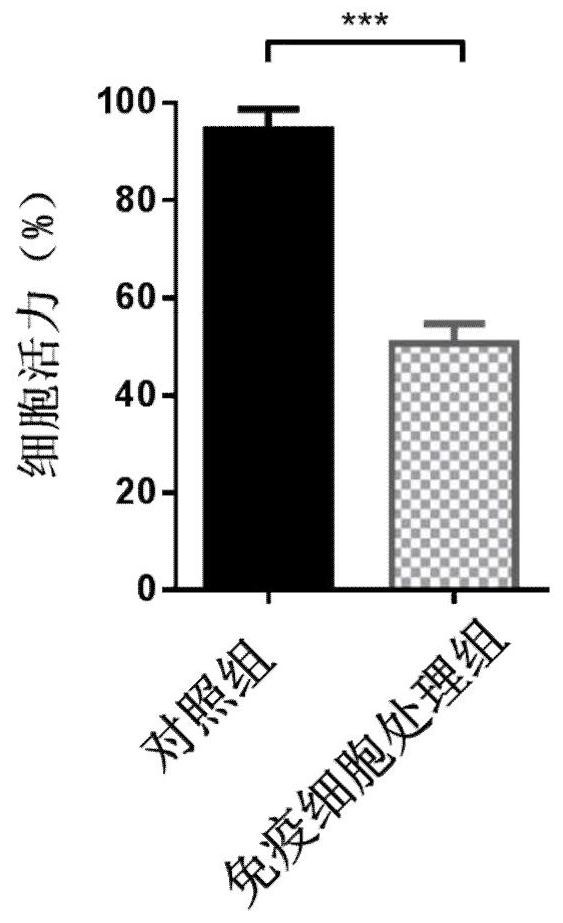Method for reconstructing colorectal cancer organoid immune microenvironment
A colorectal cancer and organoid technology, applied in the field of medical models, can solve unseen problems and achieve the effect of obvious killing ability
- Summary
- Abstract
- Description
- Claims
- Application Information
AI Technical Summary
Problems solved by technology
Method used
Image
Examples
Embodiment 1
[0047] This embodiment provides a method for remodeling the immune microenvironment of colorectal cancer organoids, comprising the following steps:
[0048] (1) The construction process of PDOs model:
[0049] 1. Place the surgically resected fresh colorectal cancer tissue (within 30 minutes from the body) in a petri dish containing 5ml PBS+1% penicillin / streptomycin and wash it twice;
[0050] 2. After thoroughly cleaning the tumor tissue, cut the tumor tissue into 2-4mm with sterile instruments 3 Fragments of the same size were placed in a 15ml centrifuge tube (containing 10ml of ice-cold PBS buffer), centrifuged at 1500rpm x 3min, and the supernatant was discarded.
[0051] 3. Add 5ml of tissue digestion solution (stemcell, cat: 07174), resuspend the tumor fragment tissue obtained in the second step, shake vigorously, and incubate on ice for 30 minutes.
[0052] 4. Filter the supernatant through a 100 μm filter into a 50 ml centrifuge tube to obtain the filtrate and enrich ...
PUM
 Login to View More
Login to View More Abstract
Description
Claims
Application Information
 Login to View More
Login to View More - R&D
- Intellectual Property
- Life Sciences
- Materials
- Tech Scout
- Unparalleled Data Quality
- Higher Quality Content
- 60% Fewer Hallucinations
Browse by: Latest US Patents, China's latest patents, Technical Efficacy Thesaurus, Application Domain, Technology Topic, Popular Technical Reports.
© 2025 PatSnap. All rights reserved.Legal|Privacy policy|Modern Slavery Act Transparency Statement|Sitemap|About US| Contact US: help@patsnap.com


